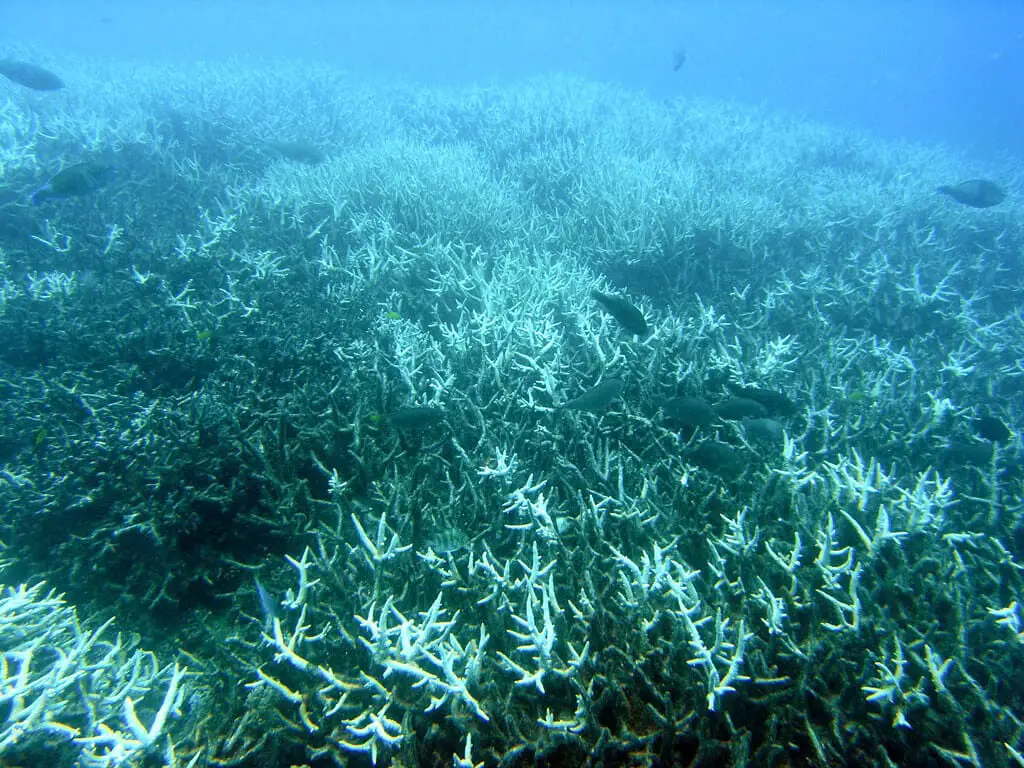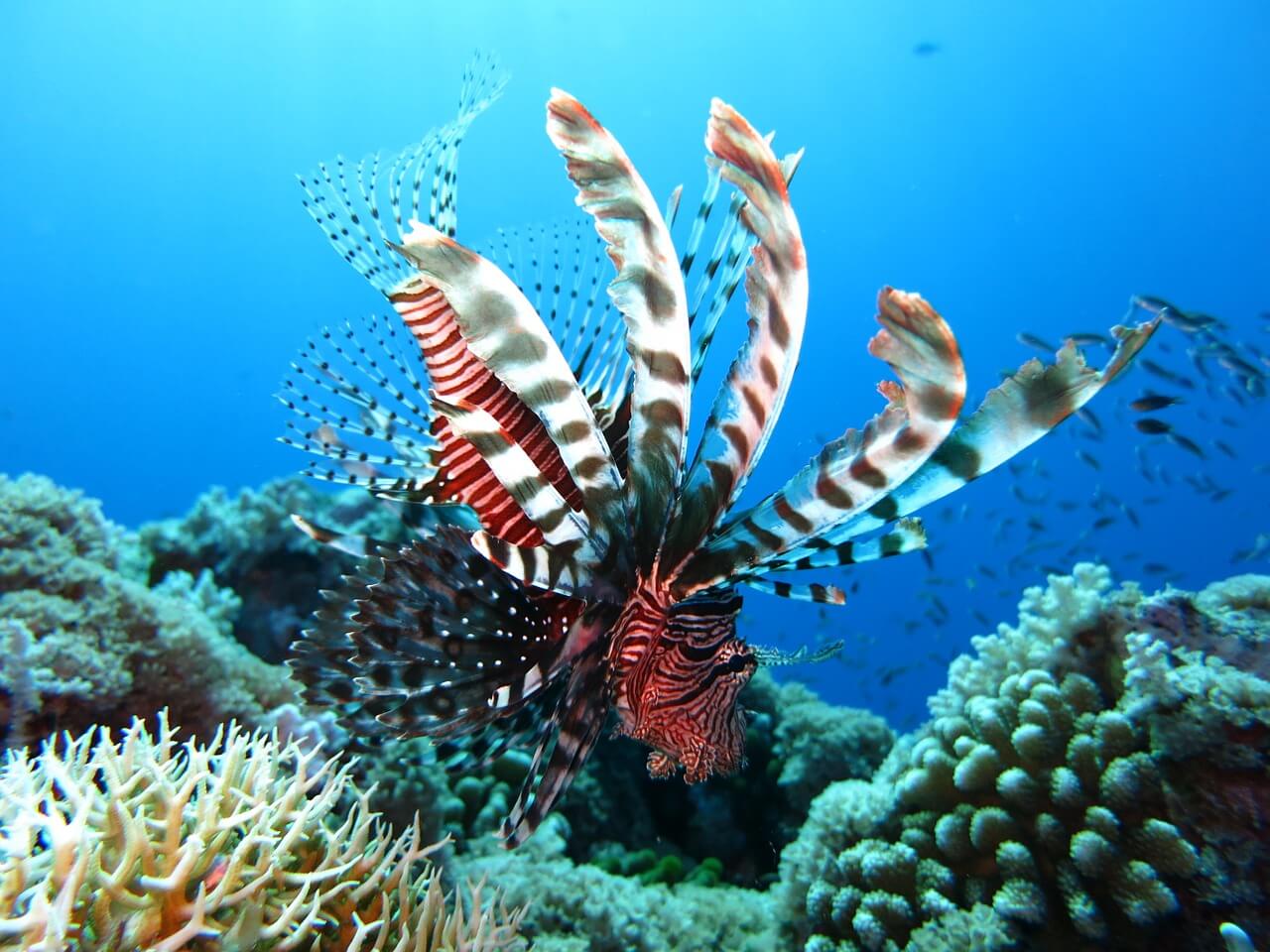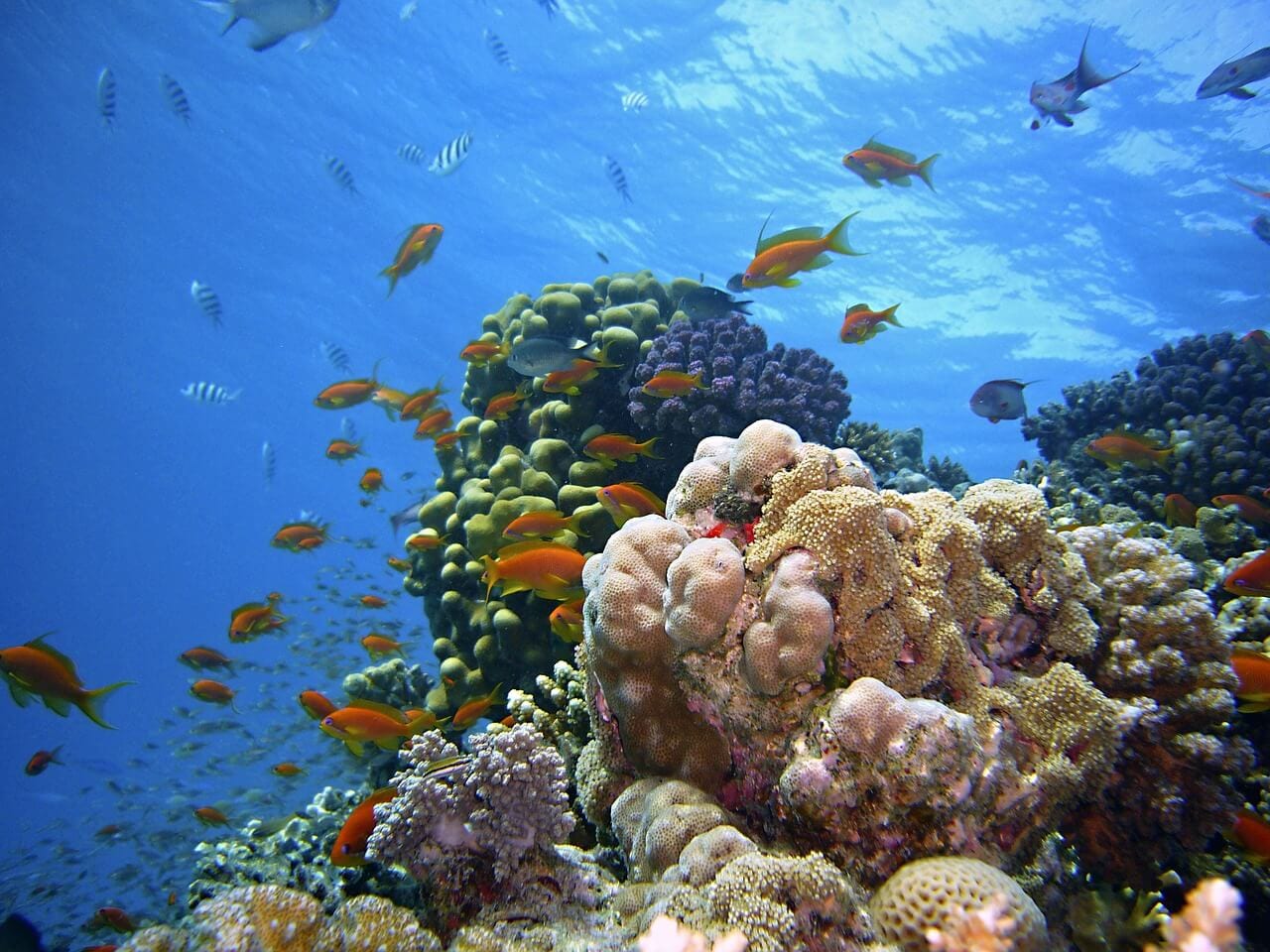Coral reefs are important marine habitats, which are built by millions of tiny coral species living in warm waters. These animals create vast calcified structures, which serve as home to a variety of species, ranging from black-tipped sharks and eagle rays to octopi and cuttlefish.
But unfortunately, many of the world’s coral reefs are currently under threat. If steps aren’t taken to immediately stop the damage occurring, these habitats – and the countless fish and invertebrate species living in them – are likely to disappear forever.
There are four primary threats to coral reefs, which we’ll discuss below.
Increased Water Temperatures
Like most other animals, corals are being forced to cope with rising global temperatures.
Many people are aware of the rising temperatures caused by climate change. However, few also realize that the earth’s oceans are warming too. This is putting coral reefs in grave danger, although not for the reasons most people would imagine.

While corals are sensitive to rising temperatures, they aren’t as sensitive as the symbiotic algae species that live with them. These algae – which give the coral reefs their color – are extremely susceptible to rising temperatures. In fact, as little as one degree of temperature change can cause them to die off completely.
When these algae die, the coral dies along with them. And because the algae can no longer give color to the reefs, they become almost entirely white. This is a condition that marine biologists call “bleaching.” In some portions of the world, all of the nearby reefs have already become bleached, thereby rendering the habitats unsuitable for other species.
Ocean Acidification
Ocean acidification occurs when the pH level of the ocean drops; when this happens, corals often struggle to survive.
All species have a preferred pH level. When their surroundings become more acidic or more basic, they can become stressed. This will eventually cause them to die off completely. Unfortunately for corals (and the species who live in the reefs they construct), the ocean’s pH levels are plummeting, which is causing the corals to die off.

The oceans are becoming increasingly acidic because of the amount of carbon dioxide humans are releasing into the atmosphere. The oceans absorb the carbon dioxide quite readily, which in turn, causes the water’s pH level to drop. This problem may even be more pressing than the globe’s rising temperatures. In fact, scientists predict that the oceans may become 150 percent more acidic by the end of the 21st century.
It is also important to note that reef bleaching eliminates food sources for many species. This includes angel fish and blennies, among others.
Invasive Species
Like many of the other habitats in the world, coral reefs are being harmed by invasive species.
Invasive species are animals (or plants) that colonize ecosystems that they’ve never inhabited before. They are one of the most underrated threats affecting coral reefs, and without prompt action, they’re likely to cause irreversible harm.

These invasive species harm coral reefs in several different ways. For example, they are often able to exploit resources more efficiently than they can in their native habitats. Often times, they are also free to live without fear of predation. This occurs because no local predators have evolved to prey upon them in these novel habitats.
One good example of an invasive species that is harming coral reefs is the lionfish – a beautiful species, which is popular in the pet trade. These fish are armed with venomous spines, which prevent most other fish from eating them. This allows the lionfish to reach very high population densities in reefs. In some cases, they’ve completely wiped out some of the native fish living in the reefs.
Physical Destruction
A variety of human activities are causing physical damage to coral reefs around the world.
In addition to the environmental threats that are harming the world’s coral reefs, simple physical damage is also contributing to their demise. Physical damage occurs in a variety of ways, including ways that are the result of commercial activities as well as recreational endeavors.

For example, large fishing vessels often ruin large swaths of coral reefs when they accidentally (or negligently) drag nets across the reefs. Some boats end up directly damaging the reefs, when they try to go over, rather than around, those in the area. Any oil or fuel spilled in the water can also damage the reefs, by covering their many surfaces and suffocating them.
Individuals damage reefs too. Many times, this occurs when snorkelers and scuba divers swim too close to the reefs. This causes them to inadvertently break off pieces of coral, thereby resulting in the death of the affected part of the reef. Others actually collect coral to sell to the aquarium trade.
What Can You Do to Help?
There are a few things that average citizens can do to help protect these important habitats.
It’s easy to feel despondent or frustrated about the harm humans are inflicting on coral reefs. But there are several things you can do to help protect the world’s reefs, to ensure they’re still around for future generations to enjoy.

A couple of the most effective strategies anyone can embrace are discussed below.
- Reduce your own carbon footprint. Do your part to combat climate change and ocean acidification by reducing the amount of fossil-fuel-based energy you use. This means doing simple things like turning off appliances when they’re not in use, walking instead of driving whenever possible, and wearing a sweater in the winter, instead of cranking up the heat in your home.
- Write your congressional representatives. Most of the major steps necessary to fight climate change and help protect coral reefs will require government intervention to enact. So, make sure you write your representatives and express to them the importance of reducing carbon emissions.
- Don’t release aquarium pets into the wild. Most of the invasive species wreaking havoc on the world’s coral reefs were originally aquarium pets that were released into the ocean. Accordingly, you’ll always want to avoid doing so. Instead, donate any unwanted aquarium pets to others involved with the hobby.
Do you have any other suggestions for people who’d like to help protect coral reefs? We’d love to hear them! Share your ideas in the comments below.














![Red Angus Closeup of a beautiful Red Angus cowPhoto by: U.S. Department of Agriculture [pubic domain]https://creativecommons.org/licenses/by/2.0/](https://animals.net/wp-content/uploads/2020/03/Red-Angus-4-100x75.jpg)

